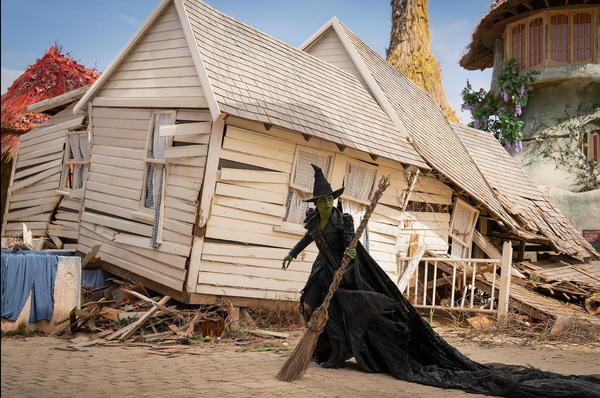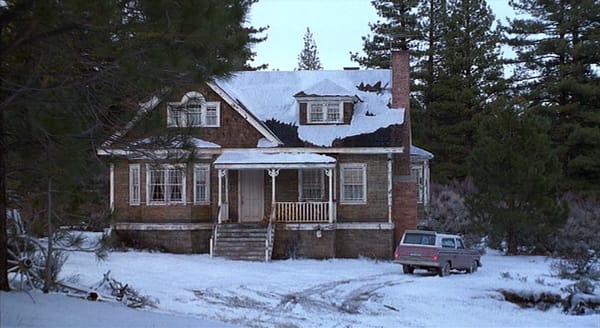Avatar: The Last Airbender: "Chapter Ten: The Library" and "Chapter Eleven: The Desert"
In which everything goes wrong
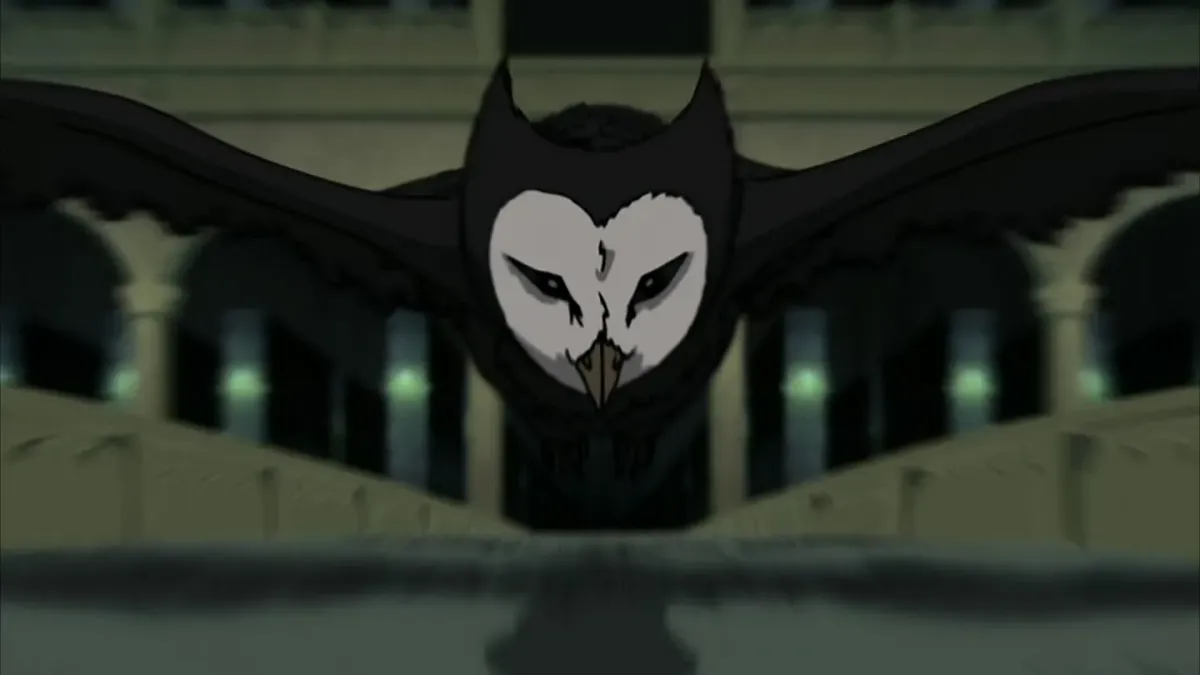
(This is the twelfth installment of my weekly recaps of Avatar: The Last Airbender, the Nickelodeon animated series that ran from 2005 to 2008 to much critical acclaim. I’ve never seen it! These recaps are only available to paid subscribers.)
“Chapter Ten: The Library” (originally aired July 14, 2006)
“Chapter Eleven: The Desert” (originally aired July 14, 2006)
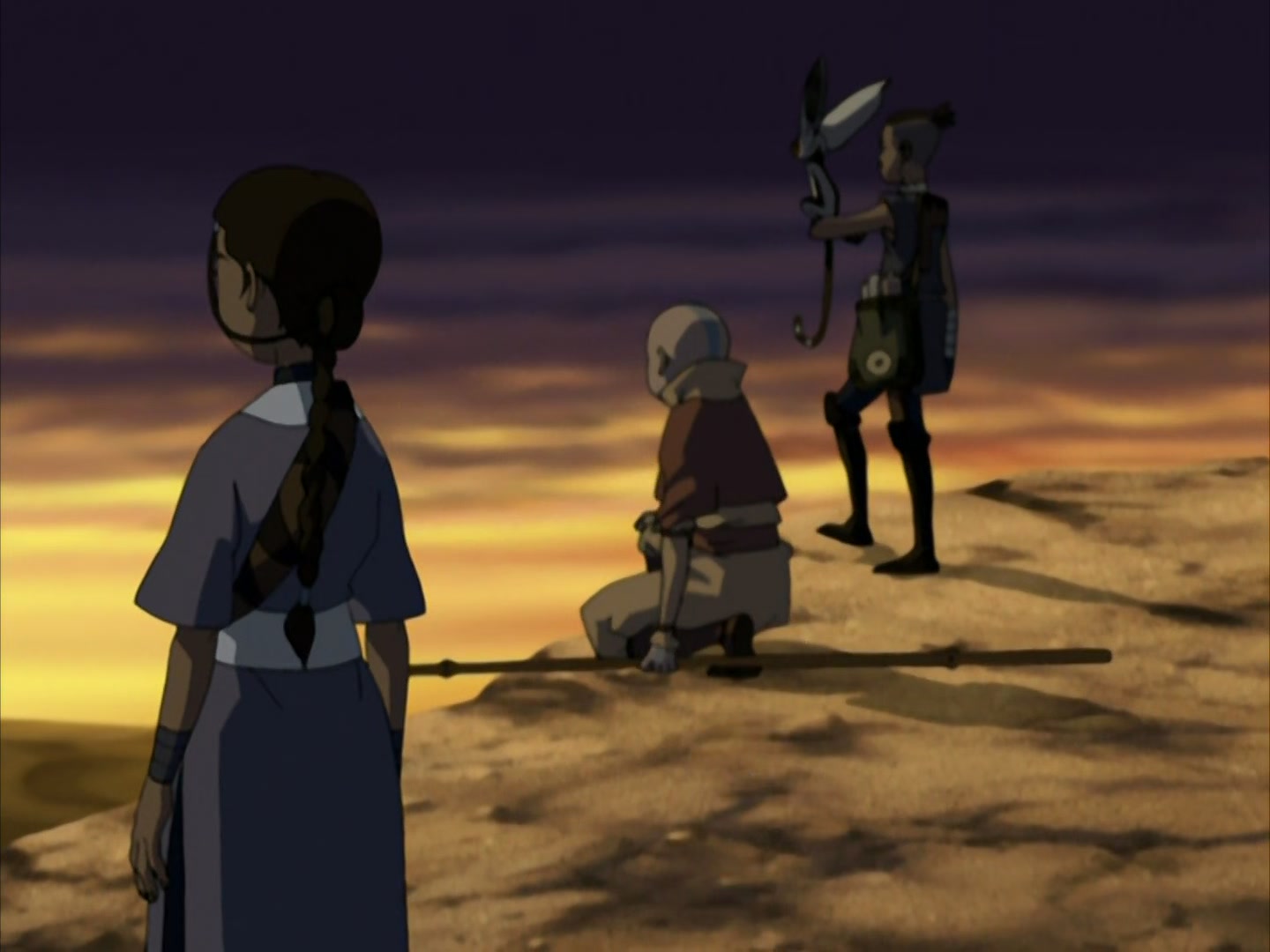
"The Library" and "The Desert" sit at the midpoint of Avatar's second season, and they aired at an awkward juncture in that season. When they aired, the show had been off the air for six weeks (the immediately preceding episodes having aired on June 2), and the next episodes wouldn't air for another nine weeks, in mid-September. I wanted to call these a midseason finale, but they're really not. They're kind of their own thing.
As such, they almost function as a standalone movie. Nickelodeon effectively aired them as one back in 2006, billing the two-parter "The Fury of Aang" and showing it in an hour-long bloc one night. But where other episodes that Nickelodeon did this with — including the two episodes immediately following these! — are packaged as one episode on Netflix, "The Library" and "The Desert" remain separate.
I'm not sure why I'm so fascinated by this, except that it's a sign of how pivotal these two episodes are to the season — but also how outside of it they seem. It's obvious that the search for Appa is going to drive much of the second half of the story (AND HE HAD BETTER BE FINE), and the discovery of the eclipse gives the kids a reason to need to get to Ba Sing Se beyond just needing to go there. So plot-wise, these episodes point the way forward. Character-wise, they also offer some choice moments, particularly when it comes to Katara's burgeoning leadership skills.
But, yeah, these episodes also sit outside of the season's main arc in a lot of ways. They raise a problem that is almost entirely new — we have to find a mysterious library out in the desert in order to have a strategy to defeat the Fire Nation — and they exist mostly to set up new problems. After "Zuko Alone" and "The Chase" seemed to be introducing a new status quo, at least a little bit, these episodes immediately establish a new new status quo.
It sounds like I'm setting myself up to say that the bad outweighs the good in these episodes or something, but I'm really not. "The Library" and "The Desert" are a terrific two-parter. They move, and the dramatic events of them feel seismic, even as we know that, like, Appa isn't gone forever. (OR HE'D BETTER NOT BE.) What's more, I love that they end not on a big plot moment but on a big character moment. Aang, who basically rage quits his entire body, is only dragged back to Earth and out of the Avatar State by Katara, who doesn't say anything but, instead, touches him on the arm. The show's facility with visual storytelling has grown so much just within this season. It's really impressive.
No, I think what's hitting me here is an interest in how the show uses serialization, which sits awkwardly between '90s style serialization (various episodic plots add up to a larger picture when watched all together but can also stand alone easily enough) and 2000s style serialization (where one continuous story is being told). It's quite similar to the shows of Joss Whedon (as I argued last week), but it's also rather similar to — of all things — The Sopranos and Mad Men.
This awkward, era-straddling form of TV storytelling is probably my favorite form of serialization, because it finds a way to incorporate two of the big strengths of television — the small stories it can tell in individual episodes and the big stories it can tell over time — into the same stories. And looked at through that lens, the surprising facility of these two episodes, which should by all rights feel a little ungainly, becomes much more apparent.
"The Library," in particular, is something I call an "Oh, right! The story!" episode, which is to say that it comes in the middle of a long run of character-focused episodes and abruptly remembers there's a larger story going on. The worst iteration of this is when a show sets aside the ongoing story for something else entirely, then suddenly turns its attention back to the main storyline after several episodes have transpired. (An example of this would be the third season of The Handmaid's Tale, which wandered down a complete narrative dead end in the middle of the season before getting back to its fitfully effective main plot.) But at its best, "Oh right! The story!" can be a way to juice the plot just when it needs to be juiced.
One reason it works here is because "the story" is so simple at its baseline, virtually indistinguishable from the premise of the show. Aang needs to find a way to defeat the Fire Nation. That he doesn't know a lot about the Fire Nation isn't something that has come up a bunch, but it's also not like it comes out of nowhere. That the kids meet a scholar who knows about a giant library is also a bit of a coincidence, but it makes the story go, which means we forgive it.
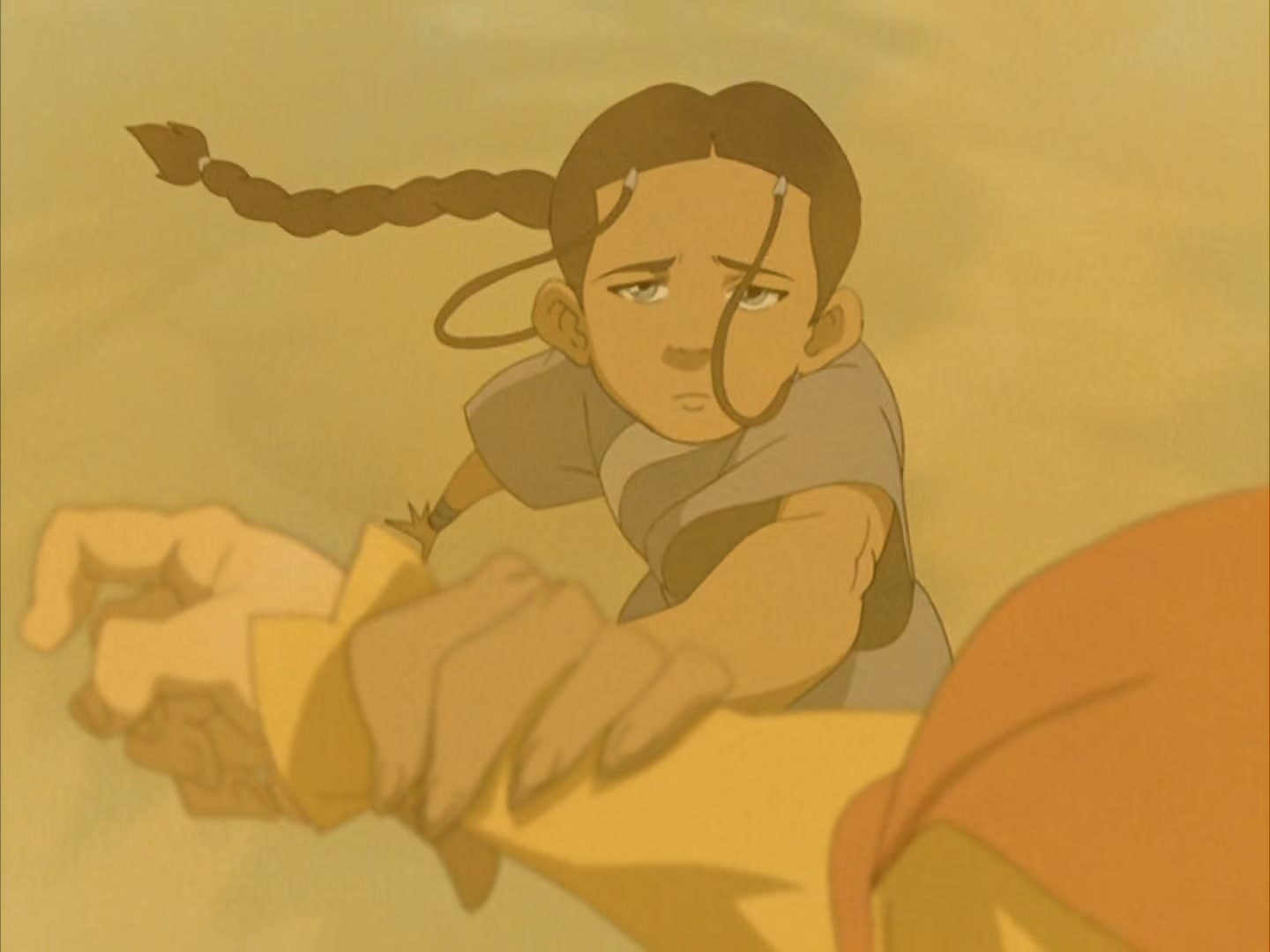
Plus, the recent stretch of episodes has done a really good job of underlining the character stakes — especially among the kids — but those stakes don't have a ton of bearing on what happens with the Fire Nation. (At least I hope Toph and Katara would stop arguing if the Fire Nation attacked.) Even the story of Azula and Zuko's relationship has little actual bearing on the war between the Fire Nation and the Earth Kingdom.
Those character stakes are preferable to just immediately ramping up the drama out of nowhere, especially since the war between Fire Nation and the Earth Kingdom remains a little abstract. (Ba Sing Se is mostly a place we've heard a lot about at this point in time.) But character stakes without larger plot stakes can feel unmoored in a show like this. Again, I don't really care if Toph and Katara become friends if the world is about to end.
So serialization in a case like this is a delicate balancing act, which makes the feat these episodes pull off that much more impressive. The side-quest into the library is enthralling, both because it allows the series to indulge in some high weirdness (the giant owl voiced by Hector Elizondo feels like the closest the show has come to outright ripping off Studio Ghibli while still doing its own thing) and because the series gets to go full Indiana Jones in the final action sequence. I was particularly taken with Toph trying like hell to stop the library from sinking and also trying to save Appa from being taken, ultimately failing to prevent the latter. (AND IF ANYTHING HAPPENS TO HIM, THIS SHOW AND I ARE GOING TO HAVE WORDS.)
"The Desert" then goes full emotional arc, allowing the darkness of this adventure to fully percolate in the characters' souls until they're beating up both on each other and on themselves. Notably, where "The Library" is a strong episode for Sokka and Toph, "The Desert" is a stronger installment for Katara and Aang. (Sokka spends a lot of it having a kid-friendly drug trip.) Aang is the character most likely to beat up on himself and his friends, while Katara is the one character who can keep everybody going. That choice also dovetails nicely with the end of the episode, when Katara stops Aang's fury with a simple touch.
I'm surprised to find I don't have a lot to say about "The Library" and "The Desert." I'm interested in them more for the part they play in season two than I am in them as episodes. They're terrific TV, fun and involving and exciting, but I'm mostly fascinated by the way they function within the larger story. They stand alone, but they also support everything both before and after them. They clarify some things and scatter even more things to the wind. It's all great, and the fact that I have as little to say as I do only underlines that greatness. This is the show firing on all cylinders, and this is me patting it on the head and saying, "Good job!"
I mean, just as long as Appa is okay.
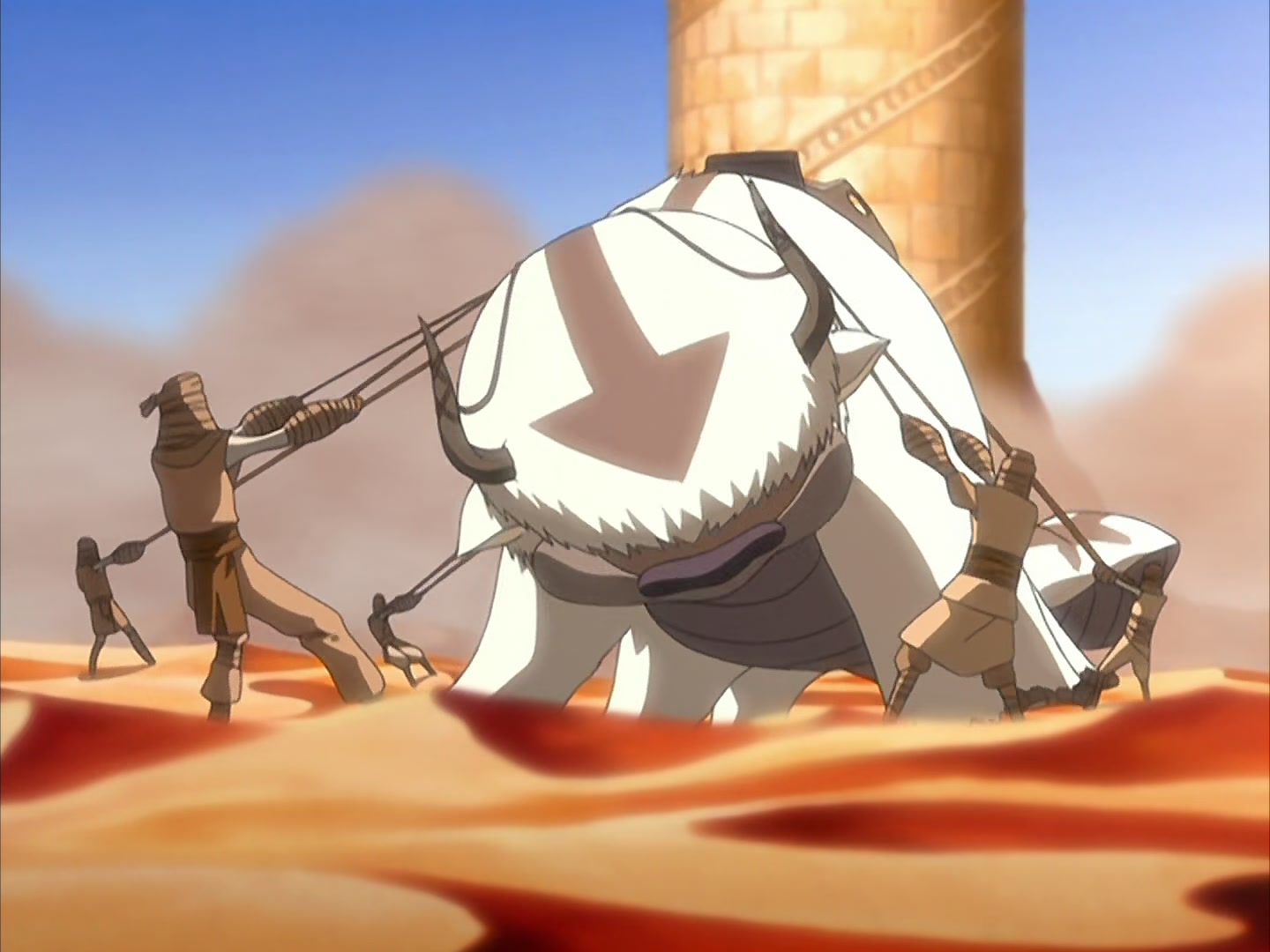
Other thoughts I thought:
- I know every week I say the kids should take on a new animal companion, but I really mean it about the Hector Elizondo owl. That guy slaps. (That said, he's taken out by a book to the head? That seems like a way too easy way to take out an all-knowing spirit bird thing.)
- The owl spirit is also the latest creature to seem like it was about to eat Momo, only for Momo to make a last-second escape. So: Who do we think is finally going to get to eat Momo? I hope the owl comes back to steal the prize!
- The professor guy is my favorite type of random guest character in a show like this. He seems like he's just been hanging around all this time waiting for the kids to stop in and ask him to help them find a missing library in the desert. (Shows like this never feel more like Dungeons & Dragons campaigns than when characters like the professor pop up.)
- The sandbenders are cool, as is the little village that Zuko and Iroh visit. But it's really hard not to compare and contrast with Tattooine, you know?
- I love that Iroh is in a secret society, because it's one of those character details that makes you go, "Oh, of course."
- Toph's inability to sense what's coming on the shifting sands is a neat way of depowering her without taking her powers away entirely.
- Sokka and Aang are sure able to find that eclipse quickly, given that the tower they're standing in is sinking into the ground. That's some pretty impressive detective work, honestly.
Next week: We reach the "Secret of the Fire Nation" two-parter, and I'm told Suki comes back, which I'm excited about. Also, we'll probably find out that Appa is now just living his best life and that we have nothing to worry about in re: the sky bison.



